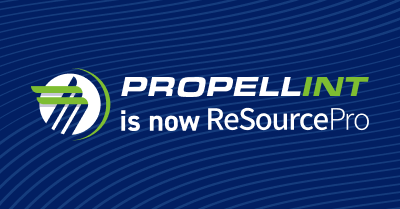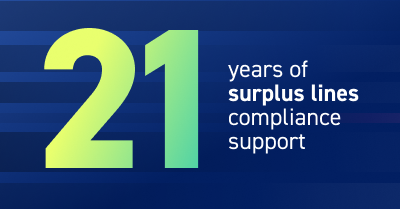Juniper Wettengel is the Director for ReSource Pro’s Client Development team.
Getting started with bots
In the past, we’ve covered numerous aspects of automation in insurance, such as how AI and machine learning can streamline various processes as well as how you can prepare your workforce to automate. But how do you determine where to start leveraging this useful technology, and what can you expect from your first automation initiative?
Identifying tasks for automation
There are likely countless processes throughout your organization that are ripe for automation. Virtually any task that is repeatable, high-volume, and standardized—or can be standardized—represents an opportunity.
The format of the input data is another important factor. If the above are true and the input data is standard and digital (like ACORD PDFs or Excel sheets), you may have a winner – but not so fast. Additional possibilities also include processes that:
- Involve a high degree of manual overhead
- Are prone to manual errors
- Have clearly defined business rules
- Are relatively stable and mature (i.e. not expected to go through major change or redesign in the future, such as a system overhaul)
- Are centrally governed and consistently followed
- Are less complex in terms of the number of systems/databases involved (preferably four or less) and number of steps involved
How about an example?
Document gathering is a common use case for automation, especially in insurance agencies. For instance, carriers often post documents to their websites that agencies need to act on or simply file into their own system. For most agencies, this adds up to 2-3 documents per account, per month. And for larger agencies, the volume is even higher.
Rather than spend hours per month handling this process manually, an agency may seek to develop a bot that can do the job on its own. The bot could log into the carrier’s portal multiple times per day; search for documents; then download, name, and save them to a predefined location in the agency management or document system, or kick off another workflow.
Other use cases for automation can be much simpler, however, such as employing a bot to remind agency clients to pay their invoices or address other time-sensitive documents on schedule.
Not everything is a right-fit
Identifying automation opportunities may be simple, but deciding which opportunities to pursue can be a much more complicated process.
In some cases, this decision will depend on the volume of the task. Keep in mind that even with automation, exceptions can still occur, processes can change, and humans aren’t off the hook. Developing and maintaining bots is a significant, ongoing investment, and as such, it may be more cost effective for certain low volume tasks—such as those that occur only once per month—to be performed manually.
In other situations, bots simply aren’t advanced enough to complete the given task. Although recent developments in AI and machine learning can handle some human-like reasoning, any process you wish to automate must be well standardized with clear and comprehensible steps.
So, in paring down automation opportunities, it is critical that you:
- Analyze whether automating the task is cost-effective based on the volume
- Identify which steps of the task are or can be standardized
- Determine how many of the steps do not require human judgement
- Identify the interactions needed with software or websites
- Be mindful of the limitations of bots.
Development, Deployment, and Maintenance
Automating a bad process will simply result in bad results being delivered faster.
Once you’ve identified a task you wish to automate, you must then standardize and streamline as many steps in the task as possible. Very few tasks can be automated 100%, so it is critical to determine which parts can be automated and which still need to be performed by a human. For this reason, it is often more effective to train insurance professionals to build and maintain robots than IT trade professionals.
Once your development team has mapped out the standard steps of the task, they will begin the process of building a bot—or multiple bots—capable of performing it. Depending on the complexity of the task, this could take anywhere from 2-3 months, and sometimes more to complete.
However, even once the bot is fully built and ready to be deployed, your journey isn’t over. Staff often need to be trained to interact with bots, and the amount of training required can vary based on factors such as your team’s comfort level with digital tools and whether the bot is attended or unattended. In either case, a human-in-the-loop component is critical. This is especially important in insurance, where state regulations are outside your control and changes are frequent when working with carriers.
In addition, you will need to start assessing the bot’s impact on your production systems as well as establishing methods of monitoring, reporting, incident handling, robot governance, information security protocols, and more. These processes will ensure bots remain an efficient part of your operations and will need to be carried out on a regular basis.
What if you don’t have the capabilities?
Between development, training, and maintenance, automation comes at a large cost. If your insurance organization is not prepared to take on the automation journey on its own, consider a partner that can handle every step of the process for you.
ReSource Pro focuses exclusively on the insurance space and has developed over 300 bots for its clients, eliminating thousands of hours in manual processing time. To learn more about how you can get started, contact us or visit our digital page




